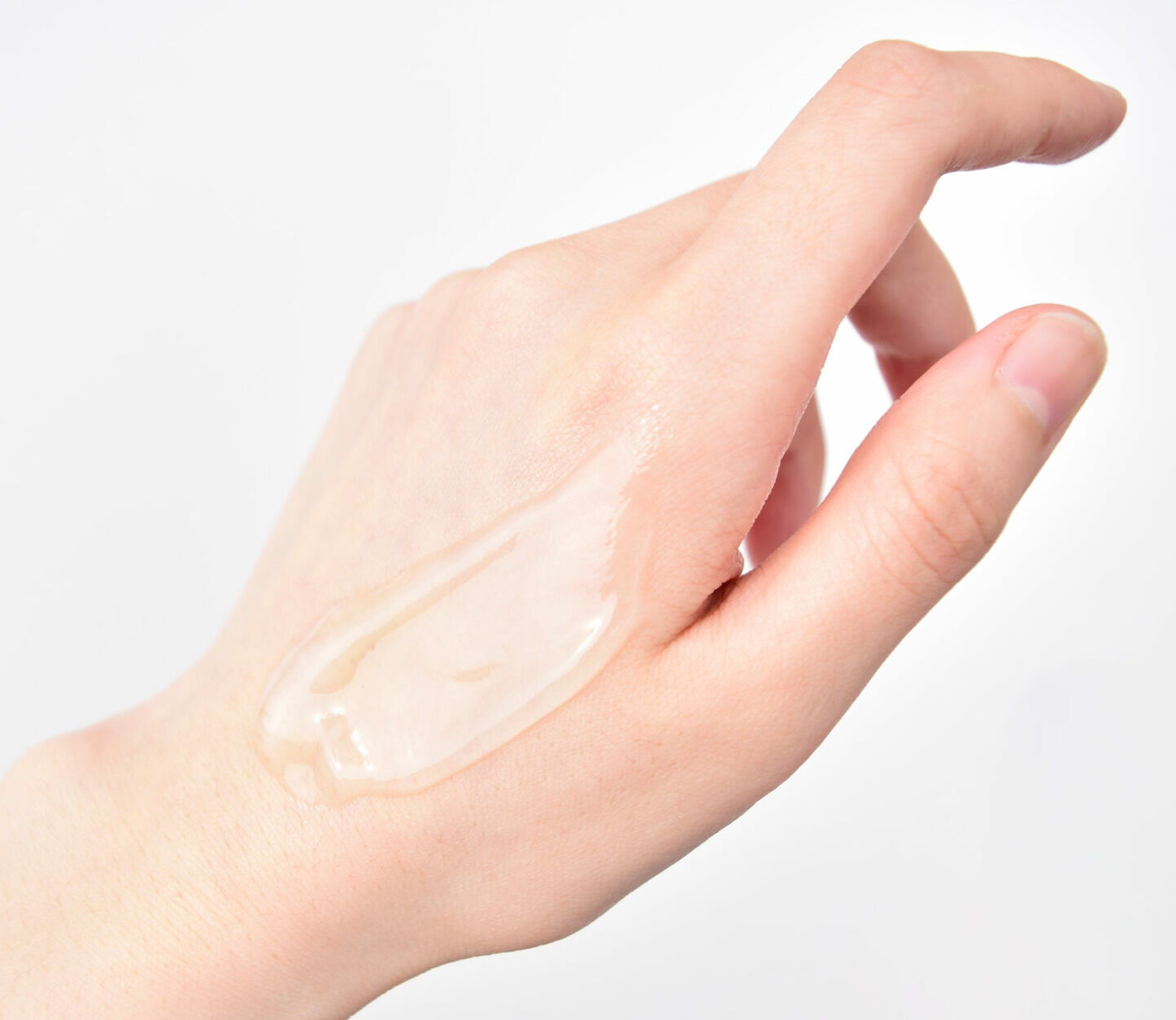Glycolink offers a novel class of hydrogel, free from synthetic components, easy-to-prepare, containing just two natural ingredients from sustainable sources and with no need for any chemical modification.

Glycolink offers a novel class of hydrogel, free from synthetic components, easy-to-prepare, containing just two natural ingredients from sustainable sources and with no need for any chemical modification.

Our natural hydrogel can be used in virtually any industrial application or R&D that needs a water-based matrix. The standard gel contains only two ingredients and can be engineered to contain functional bioactive compounds as needed. Using a proprietary approach to hydrogel formation developed at the KTH Royal Institute of Technology in Sweden, this new material is environmentally friendly and has an extremely small waste footprint.
The gel consists of bio-based components with no need for modification, making chemical cross-linkers and organic solvents redundant.
The viscosity of the gel is tunable by simply changing the ratio of ingredients. Additional properties can also be added as desired, as other materials can be mixed into the gel.
Bulk availability of ingredients and no need for expensive chemicals and temperature-specific production steps leads to a low cost manufacturing process.
Ingredients derive from safe natural microorganisms, making our gel an ethical choice in contrast to formulations that use animal polysaccharides.
The components simply mix in water at room temperature, and the gel forms spontaneously. The preparation is much easier than other gel forming processes.
The ingredients are completely bio-based and found in nature. With no solvents or chemical modifications our hydrogel is also fully biodegradable.
Glycolink is committed to the well-being of animals and firmly believe that animal testing is unnecessary. Read more in our Animal Testing Policy.
Hydrogels are a superabsorbent material created by long chains of molecules that form a network that can encapsulate huge amounts of water. Their use is widespread in society. We see them in moisturizing creams, cosmetic face masks, contact lenses, as absorbents in diapers, in toothpaste, and in hair gels. Hydrogels are also able to be embedded with useful properties for medicinal needs, as additional ingredients can be blended into the gel for later release onto the skin or into the body. It is common to have severe wounds treated with antibiotic-carrying hydrogels as it gives a perfect moist environment for the wound to heal while keeping infections away. Similarly, hydrogels can be loaded with pharmaceuticals to give a slow-release drug delivery to the patient. Hydrogels can even be combined with electronic interfaces to precisely monitor drug delivery, or to create advanced test strips to analyze small amounts of liquids. In the future, the use of hydrogels will also increase in tissue engineering for healthcare, lab grown meat, and 3D cell printing, as the gel can create a structure similar to human and animal tissue. Despite these great benefits, there is huge room for improvement in the current state of the art for hydrogel manufacture. Many hydrogels are produced from fossil-derived ingredients. Attempts have been made to create a more natural formulation from cellulose, animal mucus, or other polysaccharides found in nature that can be formed into a hydrogel. However, these ingredients often need to be chemically modified to allow them to cross-link into a gel structure. This decreases their biocompatibility and can expose the end user to chemicals, as well as generating waste during production. It also increases the cost and carbon footprint of production, as chemicals need to be handled in specific temperatures and at certain conditions.
Glycolink is offering an innovative and natural hydrogel developed at the KTH Royal Institute of Technology. By combining a novel protein that acts as a crosslinker and binds to certain polysaccharides, Glycolink can bring a 100% biocompatible and biodegradable hydrogel from renewable resources to the market. Our gel is built from polysaccharides, a class of biomolecule already abundant in food, medicine, and cosmetic products. We use a recombinantly produced protein to cross-link our polysaccharide. The spontaneous binding of our proteins and polysaccharides, which takes place in a water solution at room temperature, means that no chemical modifications are needed, reducing the cost of production. Our novel biomaterial possesses the same versatility and tunability as other hydrogels and is equally amenable to agitation while being completely non-toxic.


Lauren McKee, PhD, CSO
Docent in Biotechnology and Researcher at KTH Division of Glycoscience. She focuses her research on many aspects of sustainable development, including environmental protection and efficient use of natural resources. Lauren holds a PhD in Biochemistry and is the founder of Glycolink.

Isak Edvardsson, Business Development Assistant
A business developer with experience from several early-stage startups. Loves the challenge of commercializing scientific discoveries in the area of sustainability. Holds a degree in Business Administration and Financing from Lund University.

Mohamad Takwa, PhD, Chairman of the Board
A serial biotech entrepreneur and strategist who has co-founded several successful start-ups such as Bioextrax, Epigenica, Thyrolytics, and Avsalt. Enjoys the transformation of early-stage technology from bench to market. Holds a PhD in Biotechnology and is a co-founder of Glycolink.
Don’t hesitate to get in contact with any of our team members if you wish to reach us!

Teknikringen 1
100 44 Stockholm
Sweden
Glycolink is offering an innovative hydrogel based on a technology platform developed at the KTH Royal Institute of Technology. By combining a novel protein that acts as a crosslinker by binding to certain polysaccharides, Glycolink is creating a 100% biocompatible and biodegradable hydrogel from renewable resources.